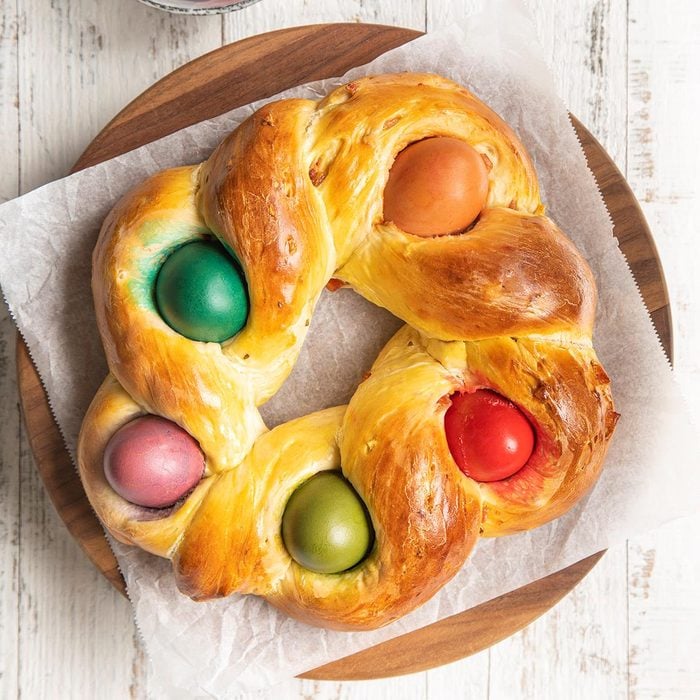For miniature Easter breads you will need 8 eggs for the breads plus 1 to glaze the loaves, for a total of 9 eggs. Divide the dough into 8 pieces instead of 3 to make individual
Italian Easter breads. Roll each piece into a smooth ball then make a hole in the center with your thumb and gently stretch the circle so it’s big enough to fit the egg after the dough rises.
After the first rise, place an egg in the center of each circle. Cover as directed for the second rise. Let the circles rise until almost doubled in size, about 15-20 minutes.
Brush with remaining egg as directed in the recipe and bake for 18-20 minutes or until golden brown. The finished breads will be 2-3 servings each. The individual loaves are too small to braid (the braided breads symbolize the crown of thorns) but they still contain the egg in the center symbolizing new life.
The richness of the sweet dough enriched with eggs, sugar and dried fruit is considered a celebration bread after the fasting Christians observe during Lent.
If your mini Italian Easter breads are a hit, try more
Easter bread recipes.
Can you eat the egg after the Italian Easter bread has been baked?
The bake time and temperature on this bread makes the eggs safe to eat. However, the texture of the baked eggs is between a soft-boiled egg and a hard-boiled egg, but drier. You may find that adding them to a salad that uses mayonnaise, like a
creamy potato salad, is the tastiest way to enjoy the eggs.
How long will Italian Easter bread last?
Easter bread will last 3-5 days stored on the counter in a sealed bag. Remove any uneaten eggs and store in the refrigerator for up to 1 week. The bread is softest and freshest on the first day. After that, enjoy it toasted or use it for
French toast or a
French toast casserole, or a delicious
bread pudding recipe.


















